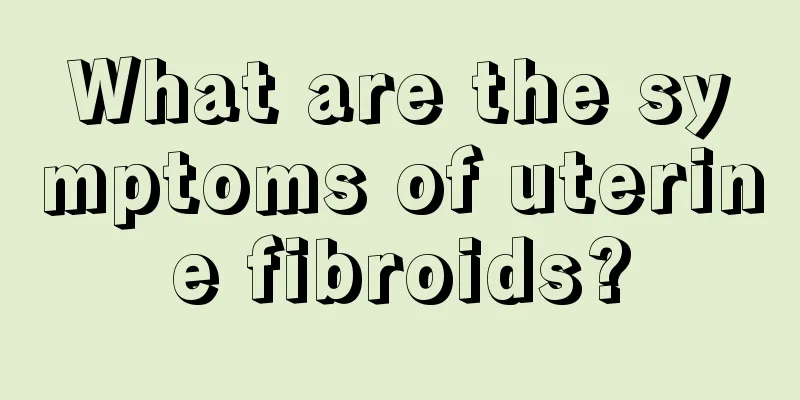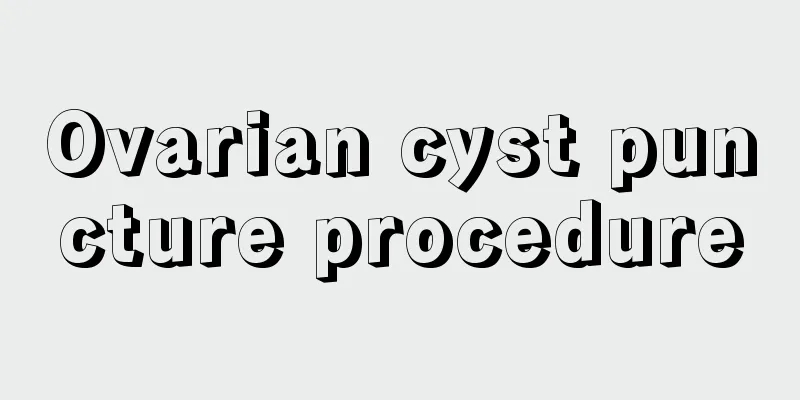What are the symptoms of breast cysts?

|
The most feared disease for female friends is breast disease, and the most common of these diseases is ovarian cyst. For the treatment of the disease, it is necessary to seek medical treatment in time, so it is very important to master the symptoms of the disease. After all, the disease is treated early and the chance of recovery will be higher. So, what are the symptoms of ovarian cyst? First, what are the symptoms of ovarian cysts? Discomfort in the lower abdomen of women is the initial symptom before the patient touches the lower abdominal mass. If the tumor has no complications, there is very little pain. If abdominal pain occurs, especially if it occurs suddenly, it is mostly due to torsion of the tumor pedicle, or occasionally due to cyst rupture, bleeding or infection. Unilateral or even bilateral ovarian cysts do not destroy all normal ovarian tissues, but they can cause endocrine disorders due to the direct metastasis of ovarian malignant cysts to the endometrium. Menstrual disorders caused by endocrine tumors are often combined with other secretory influences. This is also the most common phenomenon in clinical practice. Patients with ovarian cysts may suddenly feel that their clothes or belts seem tight and small, and then they notice that their abdomen is enlarged. Sometimes they press their abdomen and find a swelling in the abdomen, coupled with abdominal distension and discomfort. Second, the symptoms of ovarian cysts are mainly mobility, non-tenderness, and a medium-sized or smaller intra-abdominal mass, which is diagnosed based on imaging examinations and gynecological examinations. Ovarian cysts are mainly treated with surgery and are curable, but surgery is the main treatment. There are many causes of the disease, which are related to genetic, endocrine, environmental and other factors. Once ovarian cysts occur, if the surgical indications are met, they cannot be delayed and early treatment is required without any neglect. What are the symptoms of ovarian cysts? The biggest feature of an intra-abdominal mass that is medium in size or smaller, if there is no complication or malignancy, is its mobility, and it can often move from the pelvic cavity to the abdominal cavity. In malignant or inflammatory conditions, the tumor is limited in mobility. The mass is generally not tender to the touch, but if there are complications such as infection, not only will the mass itself be tender, but there may even be symptoms of peritoneal irritation and ascites. Ovarian cysts usually cause menstrual changes, and patients often go to the hospital for treatment due to irregular menstruation. B-ultrasound examination can be used to determine whether there is a cyst. It is recommended to do an ultrasound examination to understand the condition of the uterine appendages. If a cyst is present, a gynecological examination, cyst size and accompanying symptoms should be combined for further treatment. If the cyst is larger than 5 cm, surgical treatment may be considered. |
<<: Premenstrual and early pregnancy symptoms
>>: Symptoms of swollen fingers during menopause
Recommend
What disease is yellow leucorrhea usually caused by tofu dregs
Nowadays, most women have some problems with leuc...
What causes diarrhea in parturient women?
If you have diarrhea during the confinement perio...
What should women eat to supplement nutrition
Today's women are also very independent, and ...
How to treat abdominal bloating caused by ovarian cysts?
Ovarian cysts are one of the most common ovarian ...
When will the 2019 KFC Christmas Giant Bucket start booking? Which cities have the KFC Christmas Giant Bucket?
We all know that KFC launches a holiday limited e...
How to exercise in late pregnancy to help you have a normal birth
I believe that many women are afraid of childbirt...
What should I do if a girl has a stomachache during her period?
Girls may experience abdominal pain during their ...
Pregnancy signs suggest you're having a girl
During pregnancy, many changes occur in the body ...
What foods can you eat during confinement without gaining weight?
During the confinement period, many women will de...
Freezing means eternal life? After this deadline, please "throw away" frozen meat!
Review expert: Peng Guoqiu, deputy chief physicia...
Why do boys' breasts get bigger when they eat
Everyone loves beauty. Don't think that only ...
What medicine can eliminate uterine polyps?
The incidence of uterine intrauterine polyps in d...
Signs of artificial insemination failure
In today's society, many people hope to have ...
How does pregnancy cause animal skin mole
Animal skin nevus is a congenital disease of the ...
How to design the wall? Classic and durable wall decoration design skills
We all know that there are many different section...









